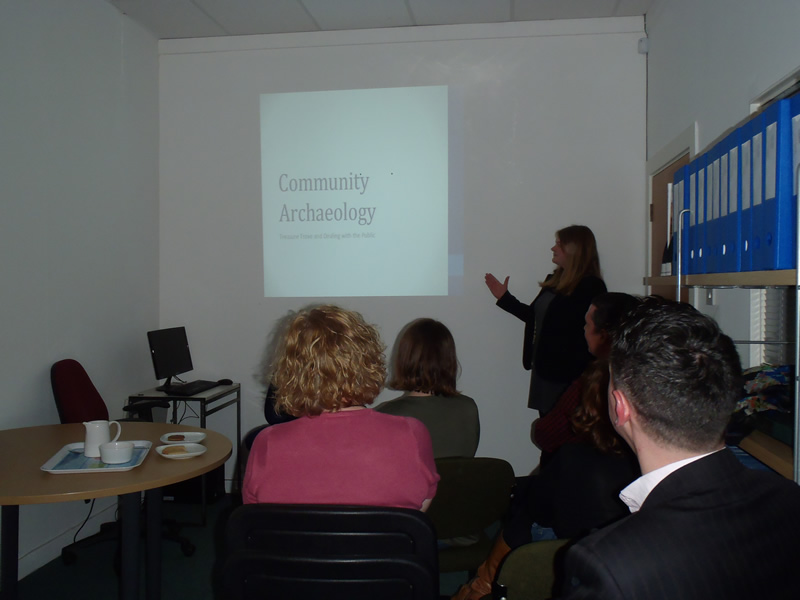
As an IfA Registered Organisation, GUARD Archaeology are committed to the continuous professional development of our staff. Because we are an innovative and progressive company, we want to help our staff maintain and develop their skills, to better the archaeological service we can offer our clients.
Since founding our company in 2011, we have held an annual staff training session each December, which last year comprised a training workshop at the National Museums of Scotland Stores, examining prehistoric and Roman metalwork and exploring the various post-excavation research questions and techniques that can be applied. Following this, we invited Natasha Ferguson and Stuart Campbell from the Treasure Trove Unit to give a refresher training session, on assessing archaeological finds in the field, to our field archaeology staff.
One of the most significant advice they offered was the idea that field archaeologists leave their pre-conceptions aside when analysing an object. It is important to keep an open mind in terms of material as varying conditions can cause wide variations in colour and appearance e.g. Copper alloy can be greyish in colour like clay, yellow brown or bluish green dependent on context, lead can be grey, white or even black, silver can be black. One should try to look at the artefact objectively, consider it's size, weight, shape, material, surface appearance, context, location and possible date. All these attributes can help in identifying the object, determining its possible use and ensuring that it is properly bagged and conserved.
One of the other aspects of finds that Natasha and Stuart also covered was Treasure Trove in Scotland. Treasure Trove is one small part of the system which is ultimately under the control of the Queen's and Lord Treasurers' Remembrancer (QLTR). The QLTR are the Crown's representative in Scotland in dealing with ownerless property 'bona vacantia'. This law stems from a medieval system that the Crown used to acquire property from those who died with no heirs.
The Treasure Trove Unit engages with the public - encouraging people to bring items forward, then where appropriate putting significant finds through the reporting system. Importantly in Scotland, and in contrast to England, archaeological finds can be regarded as significant regardless of their material.
In Scotland all archaeological finds are required by law to be submitted to Treasure Trove to be claimed and offered to museums.
When finds have been submitted to Treasure Trove either as an item, collection or excavation assemblage the Scottish Archaeological Finds Allocation Panel, who are independent advisors to the QLTR, makes decisions on which museum or alternative facility the finds will be allocated, though if no museum wants to claim the artefacts, these are returned to their finder.
While members of the public, such as metal detectorists, working independently or as part of a group not associated with any archaeological research, are entitled to 'ex gratia' rewards for archaeological finds, as part of this finds allocation process, this does not apply to archaeologists or volunteers on excavations, research field-walking, metal-detecting or any other collective venture organised for archaeological reasons.